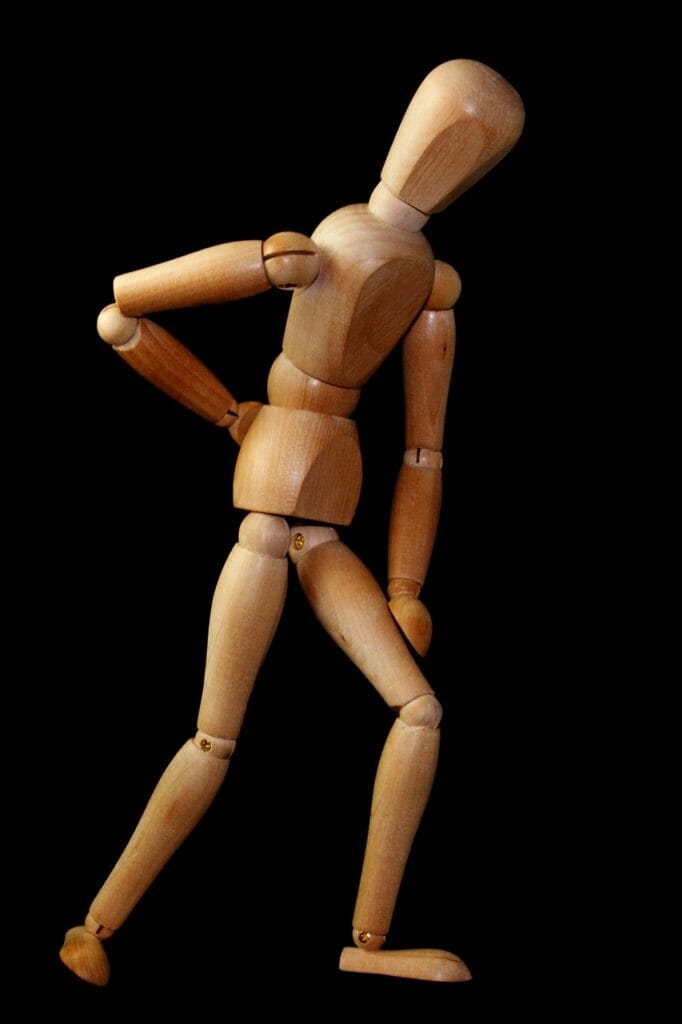This website is informational and cannot diagnose or treat illness or disease. Medical marijuana should be used under the direction of a licensed healthcare provider. This site contains advertisements. If you click a link and make a purchase, MarijuanaMommy.com may receive a commission.

Although research is currently in its infancy and, consequently, our knowledge on the subject is somewhat limited, isolated CBD has been shown to interact with the human endocannabinoid system (ECS), which is believed to be responsible for maintaining homeostasis (balance) throughout the body. This is thought to be done through interaction with and regulation of a variety of biological and cognitive functions, including pain sensation, memory, mood, appetite, and sleep.
Why Use CBD to Address Pain?
Whether it’s due to injury, illness, or lifestyle, chronic pain debilitates millions of people globally – and traditionally, the most effective relief involves strong prescription medications, many of which are addictive and come with various unwanted side-effects.
However, many patients report that CBD, is effective in managing pain but without many adverse effects and without the risk of addiction.

Types of Pain
There are different types of pain. This can make addressing pain difficult because different types of pain require different treatments.
There are also many different types of CBD cultivars and different ways of consuming or applying CBD.
CBD for Inflammatory Pain
There are many reasons why people experience chronic pain in their joints, muscles, and tissues, but the most common is inflammation. This is essentially a chemical reaction in order to heal damage as quickly as possible while resisting infection.
Sometimes, however, the body’s inflammatory processes damage tissue, thereby triggering more inflammation and worsening the overall condition. This can result in chronic pain that can last for weeks, months, or even years. Some patients believe cannabis can help address chronic inflammation.
In the lab, CBD has been shown to minimize and relieve pain that occurs as a result of inflammation. Research shows it stops the inflammatory process in several ways. It halts the breakdown of anandamide, which regulates inflammation throughout the body, triggers programmed cell death ( known as “apoptosis”) in the immune cells involved with chronic inflammation, and blocks multiple pain receptors.
This was shown in a study published by the European Journal of Pain in which researchers topically applied a CBD gel to rats with arthritis – a condition caused by inflammation of the joints – for four days. The results showed a significant decrease in obvious signs of pain as well as inflammation levels, with no side-effects. However, more research using human participants is needed to support these findings.

CBD for Neuropathic Pain
One type of pain that has traditionally been very difficult to treat with conventional medicine is neuropathic pain, with only 40% to 60% of those who suffer from it experiencing partial relief from their symptoms with pharmaceuticals.
Nerve pain occurs as a result of dysfunction of or damage to the nerves and somatic sensors throughout the body, which can be due to injury or a condition such as multiple sclerosis, an autoimmune disease that affects the whole body through muscle spasms that can be so severe they cause constant distress.
The results from one study suggest that CBD can reduce overall muscle spasticity by relaxing muscle fibers and blocking pain receptors, with a consequent significant reduction in pain and improvement in mobility in general. However, the results are modest, and further research is required in this area before these claims can be substantiated.

How to Use CBD for Pain
There are many different methods of consuming or applying CBD, and the effects of the cannabinoid on the body vary accordingly.
Oral Consumption
If ingested, such as by consuming CBD gummies, capsules, or other types of food and drink, the CBD is processed by the stomach and digestive system then transported to the liver, which breaks it down into metabolites.
These metabolites then go into the bloodstream and are able to activate the CB1 and CB2 receptors throughout the body. Because of the metabolic process, effects can take a while to be felt, although they usually are long-lasting.
Some patients report, this method of consuming CBD can be effective for the management of ongoing, long-lasting inflammatory and neuropathic pain, as the ECS is able to utilize the cannabinoid as needed – for example, by reducing inflammation and/or blocking pain receptors in the affected areas to provide relief for as long as possible.
Inhaled CBD
Conversely, when inhaled directly into the lungs via vaping or applied sublingually (under the tongue), CBD enters the bloodstream immediately and rapidly activates the CB1 and CB2 receptors.
Therefore, the effects are felt almost immediately after vaping or after around an hour after being taken sublingually, although they are relatively short-lived. Some patients report this an ideal method for someone who experiences sudden bursts of pain that need to be managed and controlled immediately.
Topical CBD
Additionally, CBD can be applied topically to injuries and conditions affecting the skin, joints, and muscles, including arthritis.
After it is absorbed, it activates the CB receptors located in the skin and is then utilized by the ECS. It may soothe pain by blocking pain signals from the affected area to the brain, reducing inflammation at the site, and inhibiting multiple inflammatory messengers in the body.
Patients report CBD’s muscle-relaxant properties come into play when applied topically, immediately relieving pain by relaxing tight muscle fibers.

How Much CBD Should I Take to Relieve Pain?
The Food and Drug Administration (FDA) has not regulated CBD, which means that there are no official recommended dosages. However, it’s possible to discuss it with a medical professional who may be able to guide consumers on how to choose an effective dose.
There are many factors that determine the ideal dose of CBD.
- Everyone’s endocannabinoid system varies, therefore each individual’s CBD metabolism varies. This is one reason why some people need low doses of CBD and others require much higher doses.
- Consumers should also keep in mind that not every human body can process orally consumed CBD. If oral consumption does not seem effective, consumers should try a different method of consumption.
- The method of consumption is also a factor in dosage. Consumers often report that they need to consume more via inhalation compared to oral consumption.
Finding the right dose of CBD is very individualized.Clinical providers often encourage consumers to start with a low dose of CBD and increase the dose gradually. Therefore, it’s always best to adopt the “start low and go slow” rule when experimenting with CBD: begin with a small dose and monitor the effects, and increase gradually and slowly until the optimum results are achieved.
Conclusion
Before beginning CBD for pain, patients should consult with their licensed healthcare providers– especially when taking prescription medication for your symptoms. CBD can interact with some medications.
While there can be adverse side effects from taking too much CBD, keep in mind that, according to the National Cancer Institute, as well as other experts, it’s impossible to overdose.
Trending Now






